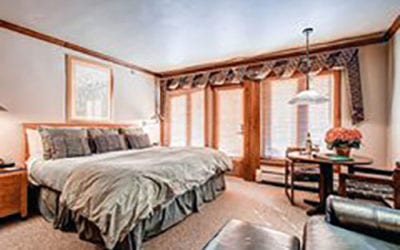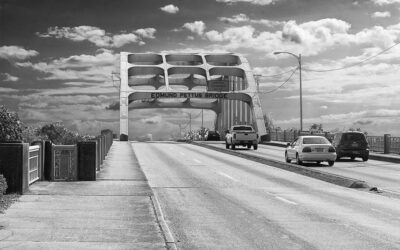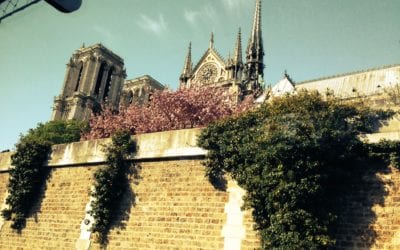The morning in Anchorage was gray, very gray. We were scheduled to fly out of Lake Hood, the world’s busiest float plane base, for a flightseeing tour of Alaska’s tundra, a couple of glaciers and their milky lakes. When we arrived at the lake, Rust’s Flying Service told us our flight was fine and would take off in about a half-hour. But, the group headed to Danali to see Mt. McKinley didn’t get such good news — their air tour was canceled.
It seems that the clouds surrounding the highest mountain peak in North America wouldn’t permit the viewing of the mountain and would make travel into Danali dangerous. Those passengers were offered a lower-priced tour towards tundra and glaciers or money back.
Our flight proceeded. Together with Captain Peter we clambered into our Cessna float plane, got our safety briefing, buckled the seat belts, put on our headsets, turned the engine over with a roar, floated away from the dock and took off over Anchorage.

It seemed that an island in the middle of Lake Hood was home to a flock of birds and a resting place for migrating birds that caused major problems for take-offs and landings in Anchorage. He told a fascinating story about one of the attempts to eradicate the problem — with pigs. It was a good start to the flight.
U.S. Department of Agriculture has specialists whose job it is to make sure animals aren’t welcome near the Anchorage airport. They shoot firecrackers and screamers, set up dummy animals and pester the occasional wayward runway-wandering moose with paint balls. They, of course do the normal things like putting up fences and try to make the area unappealing to fowl by keeping grass short or drying out ponds.

“So,” Peter said, “The specialists put Invisible Fence collars on the pigs and the pigs stayed on the island.”
Everything went well for a while, but then animal rights folk decided to come out to feed the pigs rather than allow them to forage for themselves. Peter noted, “The pigs got lazy and stopped scaring the birds away when they didn’t have to work for their food and spent all their time eating and sleeping.”
So much for that idea. He thinks they were turned into bacon, chops and a ham or two when the plan failed.

“If you were down there,” Peter noted, “You’d have to be in hip boots. It is almost impassable when it isn’t frozen.”
He told a story about how, during the winter, snowplows create roads through the region that are only passable when they are frozen. He pointed out a school bus mired in mud.
“That driver cut it too close and broke through the icy road cover and sunk into the mud.” Peter intoned, “He won’t get that school bus out till next winter when the ground freezes again.”

Of course, his attitude toward the tundra is not the all-but-sacred one favored by environmentalists. To him tundra is an over-abundant resource. He scoffs matter-of-factly, “We have so much tundra up here it is amazing — it is almost beyond conception.”

The airplane droned towards Lake Beluga, Triumvirate and Capps Glaciers. Mount Spurr and Redoubt Volcano, Peter assured us, rise majestically in the distance. We could see them if it weren’t for the clouds.
We learned that the milky turquoise color of the lake and the rivers was caused by rock being scraped off the mountains by the glaciers. Peter said, “That’s the sign of a glacier-fed stream and lake.” He pointed below to a river that he said was called Cold Creek.
“That’s a lake-fed river. See how clear it is. Look at how its crystal-clear water runs into the cloudy Lake Beluga and mixes with the milky waters.

After about an hour, we turned back toward Anchorage, landed on Lake Beluga, but decided not to deplane. We took off again and landed back on Lake Hood.

Contact Rust’s Flying Service — Anchorage International Airport, P.O.Box 190867, 4525 Enstrom Circle, Anchorage, 99502; www.flyrusts.com
Email: [email protected]. Phone: 907-243-1595.
Photos: ©Leocha

Charlie Leocha is the President of Travelers United. He has been working in Washington, DC, for the past 14 years with Congress, the Department of Transportation, and industry stakeholders on travel issues. He was the first consumer representative to the Advisory Committee for Aviation Consumer Protections appointed by the Secretary of Transportation from 2012 through 2018.




